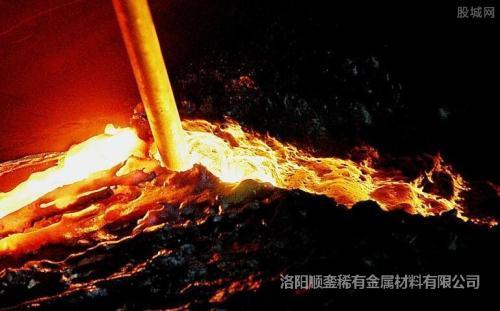22
2020
-
10
Operation of non-ferrous metals industry in 2020 and outlook for 2019
Source: Network
Release time:2020-10-22 18:03
In the face of the complex economic environment at home and abroad and the increasing downward pressure on the domestic economy, the whole industry has conscientiously implemented various policies and measures of the CPC Central Committee and the State Council to stabilize growth, adjust the structure, and promote transformation. remarkable results have been achieved in promoting supply-side structural reform, with steady growth in output and obvious improvement in efficiency, and the overall trend of stable operation of the industry.
1. Non-ferrous Metals Industry Operation in 2020
steady growth of (I) production
In 2020, the output of ten non-ferrous metals was 52.83 million tons, an increase of 2.5 percent over the same period last year, ranking first in the world for 15 consecutive years. Among them, the output of refined copper, primary aluminum, lead and zinc were 8.44 million tons, 31.87 million tons, 4.67 million tons and 6.27 million tons respectively, up 6%, 1.3, 5.7 and 2% respectively over the same period last year; the output of copper and aluminum were 20.96 million tons and 57.96 million tons respectively, up 12.5 and 9.7 respectively over the same period last year.
(II) benefits improved significantly
In 2020, the industry will achieve a revenue of 6 trillion billion yuan from its main business, up 5.6 percent year-on-year, and a profit of 243 billion billion yuan, up 34.8 percent year-on-year. Commonly used non-ferrous metal mining and smelting achieved profits of 67.2 billion yuan and 127.5 billion yuan respectively, up 133.6 percent and 18.6 percent respectively over the same period last year, while the profit of aluminum smelting (including alumina, electrolytic aluminum and recycled aluminum) was 22.6 billion yuan, up 21.1 billion yuan from last year. Non-ferrous metal rolling processing realized a profit of 108.2 billion billion yuan, up 14.6 percent from the same period last year. The obvious improvement in industry efficiency is mainly due to the adjustment of structure to promote transformation and increase efficiency, disorderly competition has been curbed, and the relationship between market supply and demand has been improved.
(III) prices are gradually improving
In 2020, the average spot prices of copper, aluminum, lead and zinc will be 380.84 million yuan/ton, 124.91 million yuan/ton, 145.59 million yuan/ton and 167.29 million yuan/ton respectively, up -6.5, 3.5, 11.1 and 10.1 respectively over the same period of last year. The average prices in the first two months of 2017 are 471.65 million yuan/ton, 133.58 million yuan/ton, 186.54 million yuan/ton and 226.95 million yuan/ton respectively, the average price increased by 23.8 per cent, 6.9 per cent, 28.1 per cent and 35.7 per cent, respectively, compared with 2016.
Total (IV) Imports and Exports Decline
In 2020, China's total import and export trade of major non-ferrous metals (including trade in gold jewelry and parts) was US $117.14 billion billion, down 10.4 percent from the same period last year. Among them: imports of 77.11 billion U.S. dollars, down 10.4 percent year-on-year; exports of 40.03 billion U.S. dollars, down 10.3 percent year-on-year. In 2016, China exported 510000 tons of electrolytic aluminum, accounting for 1.6 per cent of domestic production, while aluminum exports were 4.07 million tons, down 3.4 per cent from the same period last year.
(V) Fixed Asset Investment Decreases and Stabilizes
According to the preliminary statistics of the National Bureau of Statistics, in 2020, China's non-ferrous metals industry (including independent gold enterprises) completed fixed asset investment of 668.73 billion billion yuan, down 6.7 percent year-on-year, the decline narrowed compared to the previous three quarters. Among them, private project investment was 546.9 billion billion yuan, down 6.3 percent from the same period last year, 1.1 percentage points lower than in the first three quarters, accounting for 81.8 percent of industry investment.
The main problems of 2.
The main problems existing in the current development of the industry:
First, the research and development of deep processing and application technology is insufficient, and the products have problems such as poor quality stability and low localization of high-end materials.
Second, some varieties of smelting and low-end processing overcapacity, enterprises have long been in a state of small profits and losses.
Third, the production costs of enterprises continue to rise, financial costs remain high, and the debt burden is heavy.
The main situation facing 3. and the outlook for 2020
In 2020, the economic environment at home and abroad is more complex and severe, the downward pressure on the economy is still greater, and the new normal characteristics of China's economic development are becoming more and more obvious. In the next step, we will focus on transforming the industry's development mode, from scale expansion to optimizing stock and controlling increment, from low-cost resources and factor inputs to innovation-driven, accelerating the development of high-end materials and implementing intelligent manufacturing, and enhancing medium-and long-term growth momentum.
Considering the impact of the current rise in coal energy prices and transportation costs and weak investment on the continued recovery of industry efficiency, it is expected that the output of major domestic non-ferrous metal products will maintain a growth of about 4.8 percent in 2020, and the industrial added value of the non-ferrous metal industry will increase by about 5.5 percent year-on-year. Accelerating supply-side reform, removing production capacity, deleveraging, making up for shortcomings, accelerating industry transformation and upgrading, and reducing costs and efficiency will remain the focus of non-ferrous metal industry management in 2020.

Key words:


